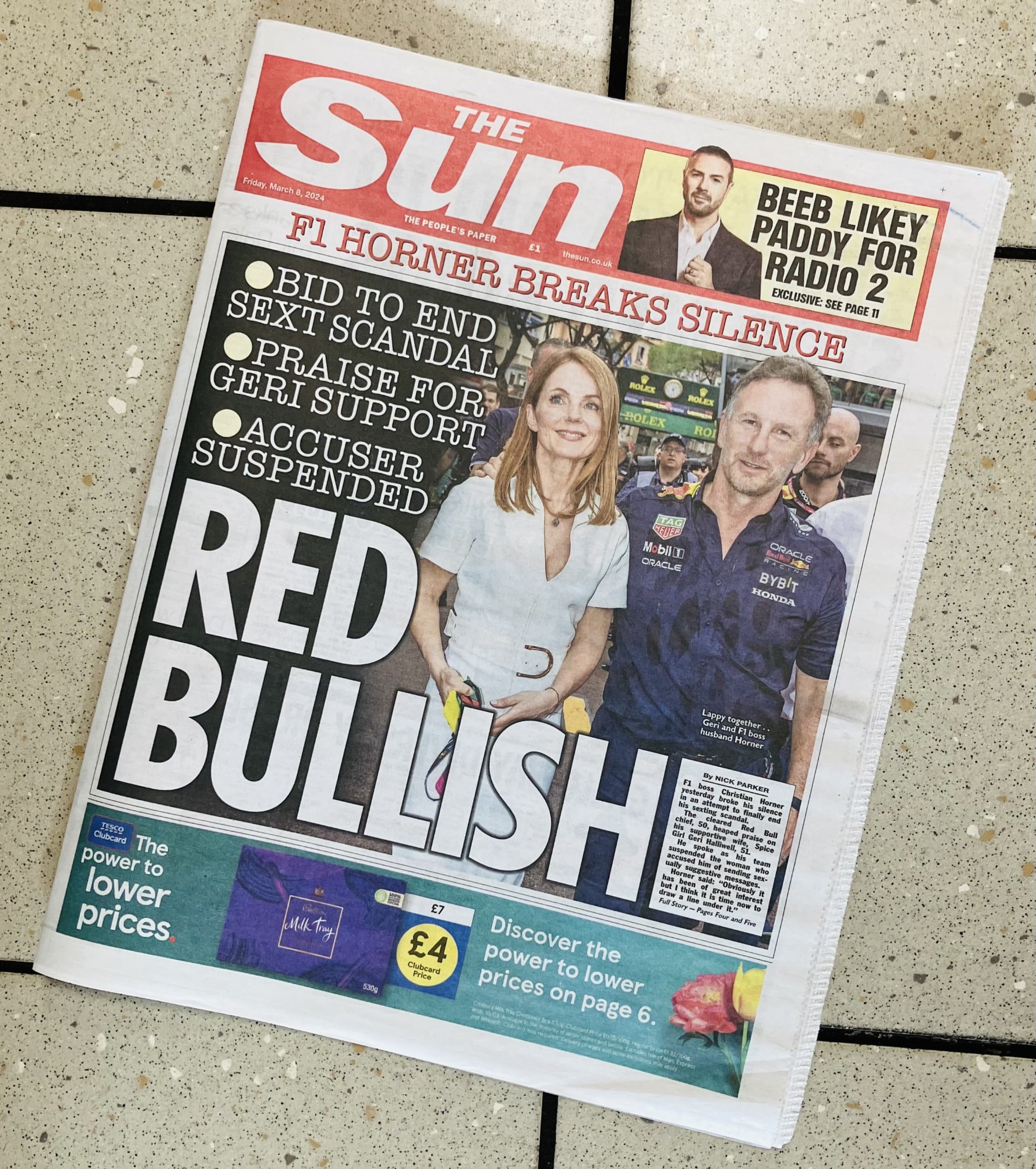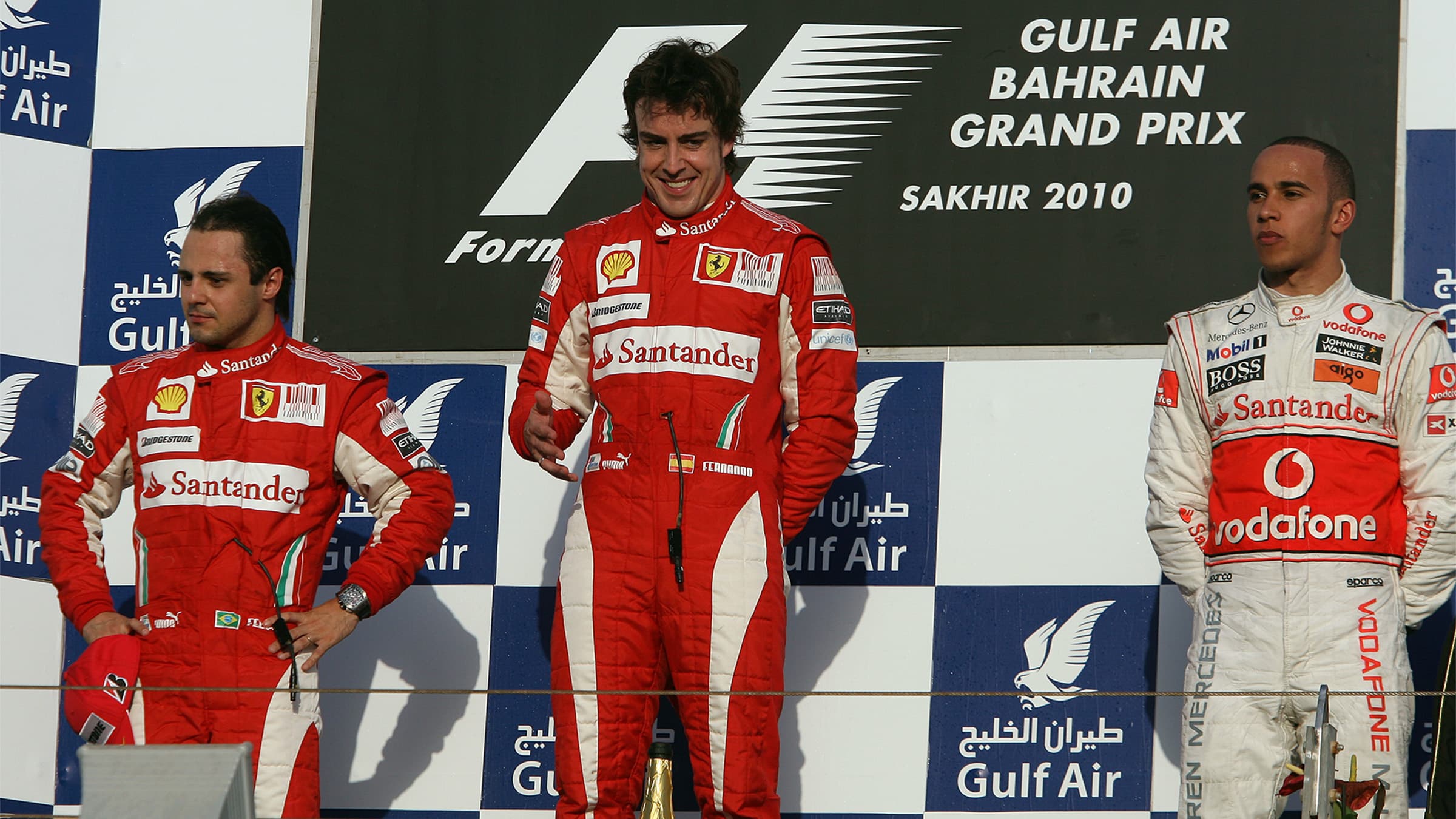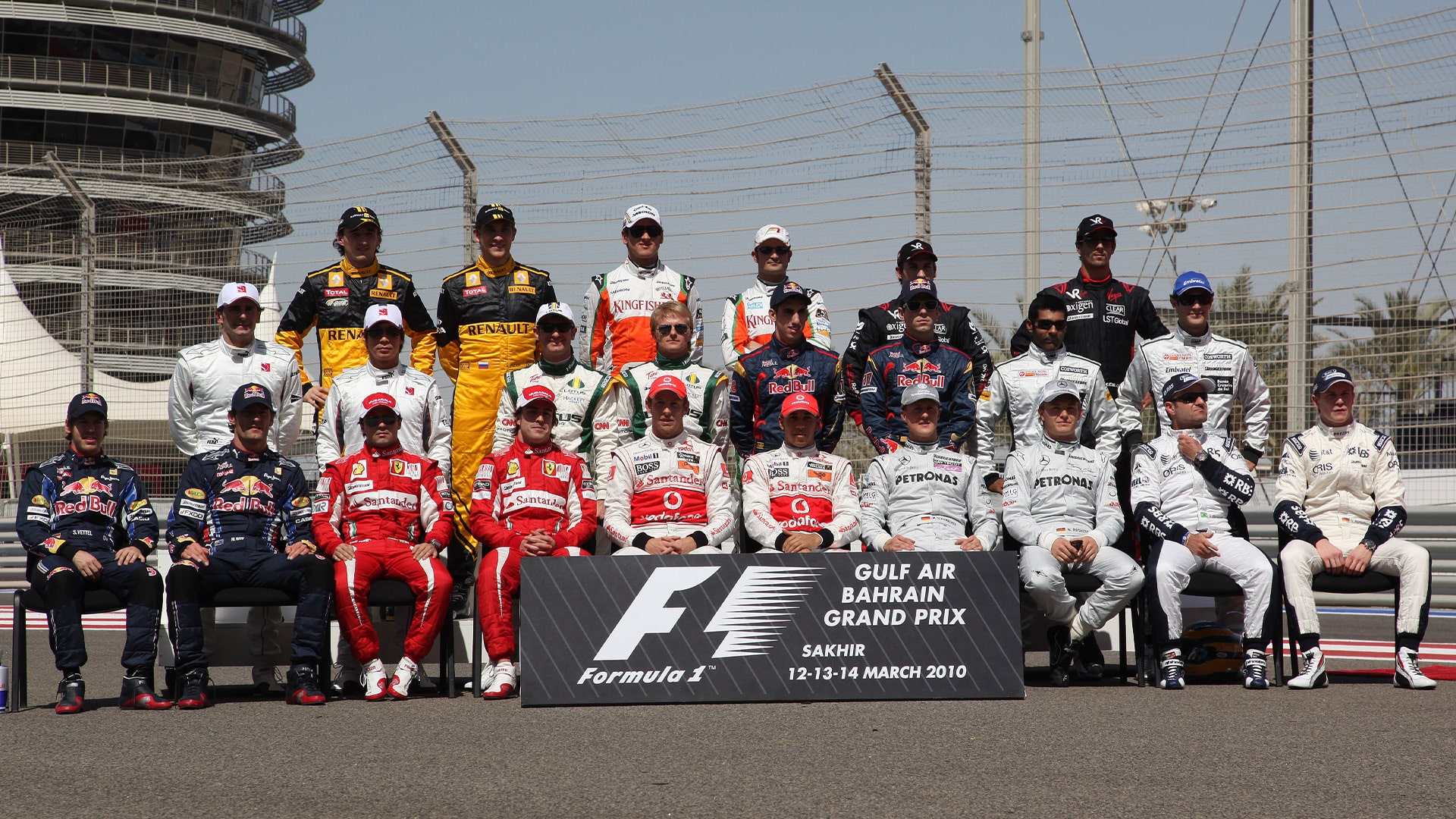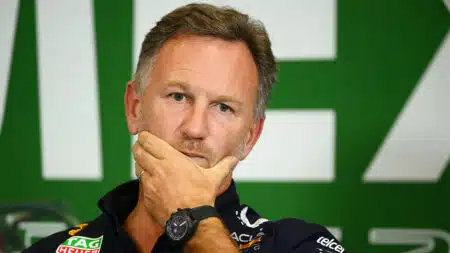Hamilton’s and Ferrari’s headline-grabbing hegemony did not last long. I think we all know that, Guenther Steiner apart, the F1 star who has traditionally been keenest on maximising his Netflix renown is Christian Horner, so we should not have been surprised when the F1 landscape was rocked by an unruly and rambunctious explosion that made Andretti-gate and Hamilton/Ferrari-gate seem like the snaps of party-poppers at a modest hen do.
Even so, the extent to which Horner-gate stole headlines all over the world still had the power to surprise many — including me. F1 knocks football off the back pages of British tabloid newspapers only rarely. It almost never makes their page-one leads. But that is what happened on March 8, for the Sun’s page-one splash was ‘Red Bullish: Bid to End Sext Scandal’, illustrated by a big photograph of Horner and his wife Geri Halliwell. Horner-gate is very far from being merely your standard Drive to Survive dust-up. Rather, it is becoming an ever less edifying spectacle that is bringing the sport into pandemic disrepute.

Horner has played a key role in the success of DtS — but will his alleged off-track antics pull F1 further away from on-track action?
The Sun
When I was chief communications officer of Aston Martin (2021-2022), one of our sponsors commissioned a bit of focus group work on what F1 fans thought of Drive to Survive. By and large they liked it. Even if they did not, calling it “silly” or “sensationalist”, they mostly watched it. One chap’s reply in the qualitative bit (ie, fan interviews) of the research still sticks in my memory. When asked whether his enthusiasm for Drive to Survive had led him to view more grands prix on live TV than he had been watching before, he paused, frowned, then earnestly replied: “Oh no, on the contrary. I don’t want to spoil my enjoyment of all the feuds and squabbles that make Drive to Survive so brilliant by knowing the plot of the next series in advance, so I try very hard to avoid watching any of the F1 races or even reading about anything that happens in F1 throughout the year.” I think it is safe to say that he was and is an outlier, and that Liberty Media’s senior marketers were not seeking that outcome when they invented their Netflix blockbuster.
Personally, I preferred F1 when team principals were heavy on gravitas and limelight-shy. I am thinking of giants of the sport such as Ron Dennis, Frank Williams, Ken Tyrrell, Colin Chapman et al. I also enjoyed F1 better when the on-track action was not so relentlessly predictable. A recent-ish example that springs to mind is the 2010 season, which, like 2023 and 2024, kicked off with a Bahrain Grand Prix.
Instead of the on-track samey-ness that 2024 (so far), 2023 and indeed 2022 provided, 2010 offered exhilarating variety. The 2010 Bahrain Grand Prix was won by Fernando Alonso — on his Ferrari debut. The next six grands prix were won by four different drivers: Jenson Button (the reigning world champion, who had joined McLaren from Brawn, the team with which he had just triumphed), Sebastian Vettel (Red Bull), Button again, Mark Webber (Red Bull), Webber again, and Lewis Hamilton (McLaren).

Fernando Alonso wins on debut for Ferrari in 2010 — but would narrowly miss out on a third world title
Grand Prix Photo
When the F1 circus flew into Abu Dhabi for the 19th and last grand prix of the year, four of the above five aces were still in contention for the drivers’ world championship: Alonso (246 points), Webber (238), Vettel (231) and Hamilton (222). Vettel nicked it, having not headed the points standings at any time until he crossed the line to win that final race, and he became the then youngest world champion in F1 history as he did so.
Was anything else new in Bahrain in 2010? Yes. Five rookies made their F1 debuts: Nico Hülkenberg, Bruno Senna, Karun Chandhok, Vitaly Petrov, and Lucas di Grassi. Oh and three new teams made their F1 debuts, too — Lotus (or, later, Caterham), Hispania (or, later, HRT), and Virgin (or, later, Marussia) — four if you include Mercedes, which had just taken over Brawn.




